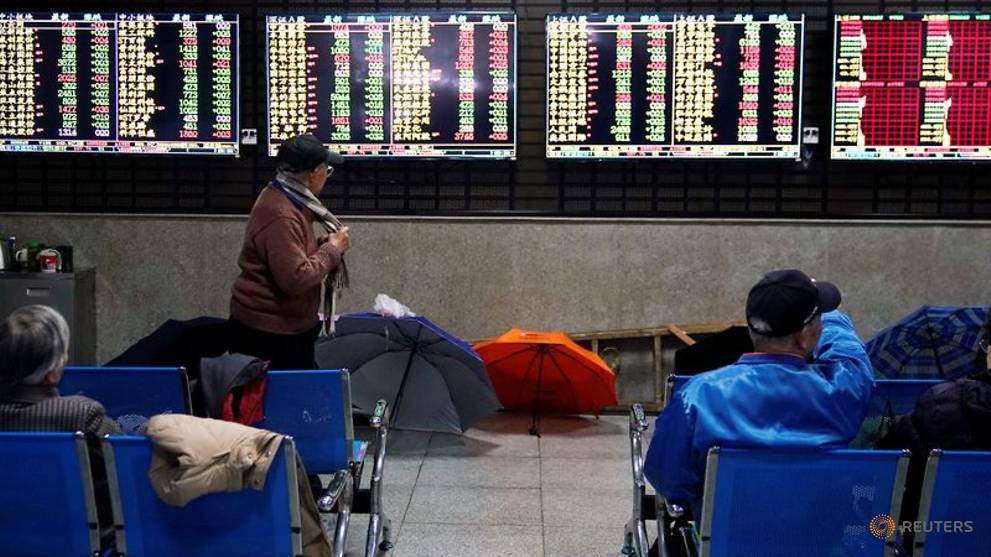
Asia shares try to rally after gut-wrenching week
Asian share markets were praying for a reprieve at the end of a punishing week as investors snatched at hopes the coronavirus could be contained, even as headlines spoke of more cases and deaths.
SYDNEY: Asian share markets were fighting to stabilize at the end of a punishing week as investors clutched at hopes China could contain the coronavirus, even as headlines spoke of more cases and more deaths.
Supporting sentiment were surveys showing Chinese manufacturing activity held steady in January while services actually firmed, though this was likely before the virus took full hold.
Indeed, reports some Chinese provinces were asking companies not to re-start until Feb. 10 suggested activity would take a hard knock this month.
For now, sentiment got a timely boost when Amazon's sales blew past forecasts and sent its stock soaring 11per cent after hours, adding over US$100 billion in market worth.
MSCI's broadest index of Asia-Pacific shares outside Japan edged up 0.4per cent, but was still down 3.8per cent on the week so far. Its 2.3per cent dive on Thursday had been the sharpest one-day loss in six months.
Japan's Nikkei bounced 1.8per cent, recouping half of its weekly loss. E-Mini futures for the S&P 500 firmed 0.2per cent, having rebounded late Thursday to end up 0.5per cent.
The World Health Organization on Thursday declared a global emergency as the virus spread to more countries.
Tedros Adhanom Ghebreyesus, WHO director-general, said the greatest worry was the potential for the virus to spread to countries with weaker health systems.
Yet investors took heart from comments that the drastic steps Beijing was taking would "reverse the tide" and contain the outbreak.
"Some shorts covered after the director gave the WHO's stamp of approval to China's aggressive containment effort," said Stephen Innes, Asia Pacific market strategist at AxiCorp.
"For now, the market's risk lights have shifted from flickering on red to a steady shade of amber, which could bring more risk back into play."
Wall Street quickly recouped its losses and ended higher in the wake of the WHO comments.
The Dow finished up 0.43per cent, while the S&P 500 gained 0.31per cent and the Nasdaq 0.26per cent. After the bell, NASDAQ futures pushed 1.3per cent higher on the Amazon results.
Still, the flow of news on the virus remained bleak with China's Hubei province reporting deaths from the disease had risen by 42 to 204 as of the end of Jan. 30.
More airlines curtailed flights into and out of China and companies temporarily closed operations, while Italy became the latest country to confirm cases of the virus.
JPMorgan shaved its forecast for global growth by 0.3per cent points for this quarter, but then expected the loss to be made up over the rest of the year.
BONDS IN DEMAND
The drum beat of bad news kept safe-haven bonds well bid, with yields on U.S. 10-year Treasury notes down 8 basis points for the week so far and near four-month lows.
The yield curve between three-month bills and 10-year notes had also inverted twice this week, a bearish economic signal.
In currencies, the star performer was sterling which jumped after the Bank of England confounded market expectations by not cutting interest rates on Thursday.
The pound was last at US$1.3100, a surprisingly steady performance given this is the day the UK officially leaves the European Union.
The dollar took a slight knock overnight when data showed the U.S. economy grew at its slowest annual pace in three years in 2019 and personal consumption weakened sharply.
It was a shade firmer on the yen at 109.07, while the euro was steady at US$1.1030. Against a basket of currencies, the dollar was steady at 97.858.
The dollar has fared much better against emerging market currencies as investors ran from risk.
Spot gold was almost unchanged for the week at US$1,571.20 per ounce, having failed to get much of a safe-haven bid as a range of other commodities, from copper to iron ore, were hammered by worries about Chinese demand.
Oil bounced on short covering, having hit its lowest in three months as the global spread of the coronavirus threatened to curb demand for fuel.
U.S. crude regained US$1.08 to US$53.22 a barrel, while Brent crude futures rose US$1.01 to US$59.30 a barrel.
(Editing by Sam Holmes)